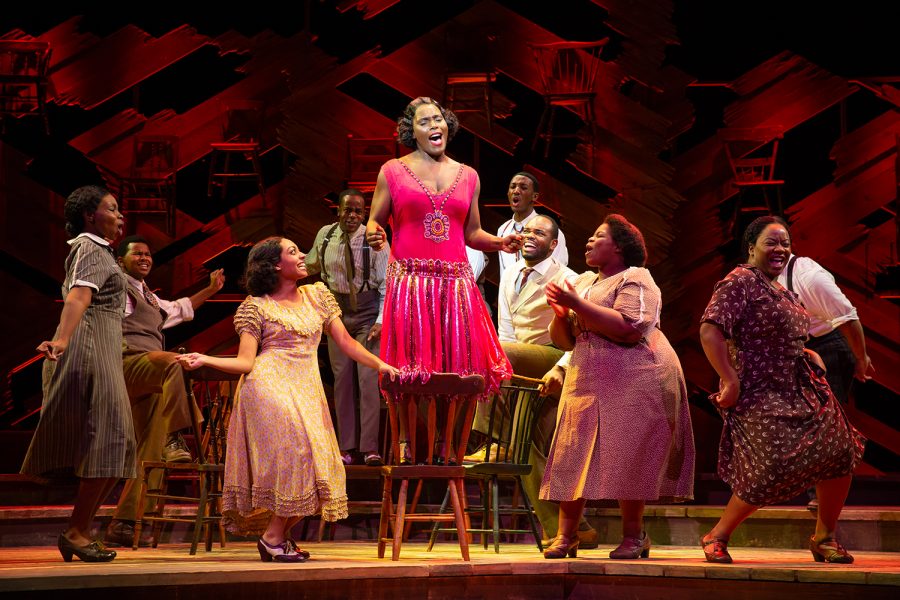Songs, soul, and sisterhood: How the ladies of The Color Purple created an unforgettable show
The complex and moving stories of sisterhood are what make the musical adaption of The Color Purple truly special.
Jeremy Daniel (www.jeremydanielp
Contributed from Hancher
January 25, 2020
After walking into the theater and seeing The Color Purple’s set, I was a little confused by the design choice. Rustic wooden chairs that were used throughout the production were pegged to a wall made of broken boards, which made for an unusual sight. However, by the end of the show, I realized the strange set was a perfect metaphor for one of the show’s key themes: make the most of what you have, even if it doesn’t seem like much.
The musical’s leading ladies did a brilliant job of portraying how women find strength and community through their relationships with one another, as well as from within themselves, even when they have nothing else.
It comes as no surprise to those familiar with The Color Purple that it’s a feminist story in all its iterations, including the musical adaption — but seeing the actresses connect with each other live and in-person was truly powerful in a way that neither the book nor the film capture.
Celie (Mariah Lyttle) and Nettie (Nashka Desrosiers) were so believable as sisters that one nearly forget they’re only siblings on stage. From the show’s first scene, the characters’ love for one another was heartwarming, which made their reunion in the show’s final scene all the more moving.
The support Celie received from her friend Sofia and her abusive husband’s obsession, Shug Avery (Sandie Lee), felt just as genuine, despite their roles in Celie’s life being very different from their role that her sister fulfilled. While Nettie provided unconditional love, Shug Avery taught Celie that self-love comes from within. Although the story was written nearly 40 years ago, Shug’s lesson is one that many women are still learning to this day.
Celie taught a lesson of her own to Shug Avery. Celie was the first person that Shug developed a maternal love for, which she previously thought was something that wasn’t in the cards for her.
Lastly, Sofia (Chédra Arielle) taught Celie to stand up for herself with an attitude-filled song that left the audience clapping and snapping. The portrayal of Sofia brought some much-needed energy and humor to the stage, while also making sure the audience knew that she’s a woman who won’t settle for less than she deserves. Being able to simultaneously play the funniest and most badass woman on the stage isn’t an easy feat, but Arielle executed the performance expertly.
The story these women told is a beautiful and empowering one, which its balance of soulful and joyful songs complimented perfectly.
The only times my foot wasn’t tapping were the moments when I was too moved to move. The entire cast proved that its voices were incredible inside of a chorus and out. There were a handful of vocal moments that had the audience applauding even before the songs ended.
The touring cast of The Color Purple brought an iconic story and empowering relationships to life in a way that I’ll never forget, and managed to do so without missing a beat. The care that was brought to performing these roles made it easy to see parts of yourself in each of the leading women. Their stories will stay not only in my mind but in my heart as well.



